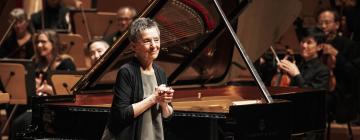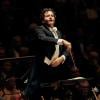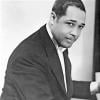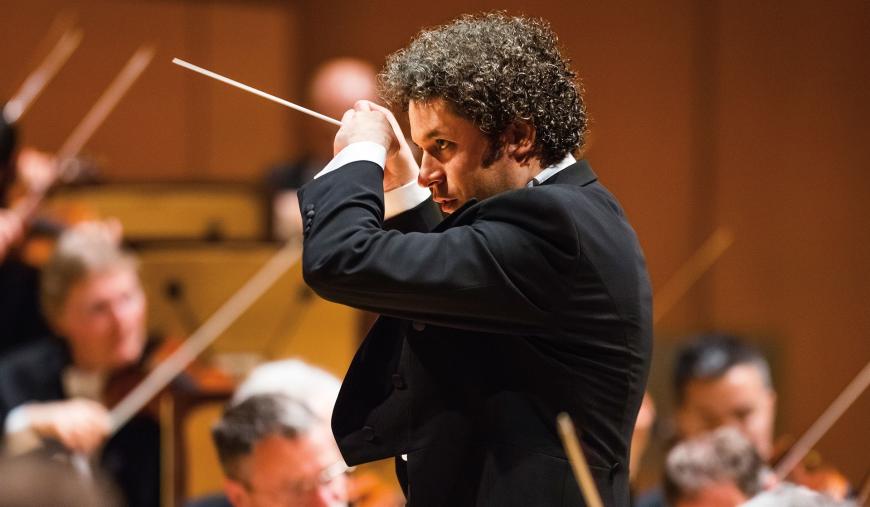
In 1960, Duke Ellington and Billy Strayhorn came up with a project that seemed dubious on paper yet turned out to be great in practice. With Strayhorn probably doing most of the work, they took a hold of the suite from Pyotr Tchaikovsky’s The Nutcracker and completely remade it into convincing, swinging, vintage Ellington/Strayhorn jazz. They weren’t the first big band-meisters to try — others had preceded them, including Shorty Rogers and even Spike Jones — but theirs turned out to be the most enduring.
The Ellington band’s superb recording of that version of The Nutcracker, recorded here in Los Angeles, came out that year. Columbia did Strayhorn the rare honor of giving him equal billing with Ellington on the album cover — along with Tchaikovsky, of course — as did the reissue on Columbia’s budget Jazz Odyssey label in 1968, now coupled with a treatment of excerpts from Edvard Grieg’s Peer Gynt suites. Yet it wasn’t until after 2010, when their Nutcracker score was finally published, that it really took off around the nation as a fresh alternative to the original in live performance.
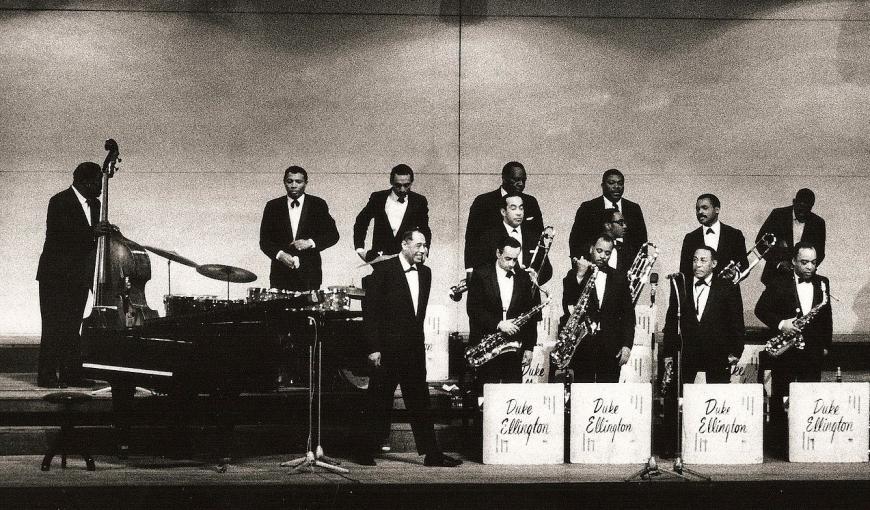
On Sunday afternoon, Dec. 4 at Walt Disney Concert Hall, Gustavo Dudamel and the Los Angeles Philharmonic joined the growing number of organizations that seek to have it both ways (as program annotator John Henken put it). They would present Act 1 of the Tchaikovsky ballet in the first half of the concert and devote the second half to the Ellington and Strayhorn treatment — a half-hour, nine-movement work encompassing all eight parts of Tchaikovsky’s suite, plus a short entr’acte.
Things, however, did not quite materialize as advertised. We only heard five of the nine movements, with Tchaikovsky’s original Chinese Dance and Trepak inserted in between the Ellington/Strayhorn “Toot Toot Tootie Toot” (Dance of the Reed Pipes) and “Dance of the Floreadores” (Waltz of the Flowers). With the rhythm section now on the sidelines, the Phil concluded with the original pas de deux (which includes the “Dance of the Sugar Plum Fairy”) and the Final Waltz and Apotheosis at the end of the ballet.
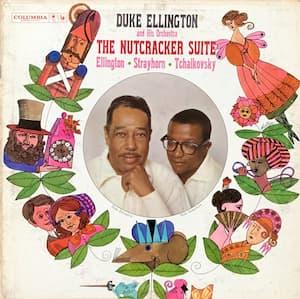
Having made it this far, why didn’t the Phil do the entire Ellington/Strayhorn suite? Aside from the “Peanut Brittle Brigade” (March), they had never played it before. (It was scheduled for Toyota Symphonies for Youth last December, but those concerts were canceled.) Perhaps rehearsal time was short, given that the LA Phil is also preparing Richard Wagner’s lengthy Tristan und Isolde for The Tristan Project this coming weekend.
But there were plenty of compensations to be savored, not the least of which was the opportunity to hear the original Act 1 of The Nutcracker with a full symphony orchestra unleashed from the confines of a pit (or canned music on loudspeakers). Dudamel has always been good in Tchaikovsky; his delight with the score was contagious, the tempos and attention to detail (particularly in the winds) right on target, and he was super attuned to the dance rhythms that make this music flow and move.
Yes, The Nutcracker has been terribly overexposed year after year, but when heard in this acoustically live hall, and played this well, the old thing can send chills down your back again. It happened to me when the battle scene erupted in full sonic splendor and when the Los Angeles Children’s Chorus came out front and center in its crimson vests to divinely sing the magical vocalise parts in the “Waltz of the Snowflakes.”
With the Ellington/Strayhorn excerpts, inevitably there were compromises, one of which is that the score used was an “orchestral adaptation” by Jeff Tyzik that inflates and reassigns passages from the Ellington big-band instrumentation. All of that weight is difficult for a rhythm section to lift up in order to swing the orchestra; the Phil has done it before in other Ellington pieces, yet here, they were just barely able to get it off the ground. It sounded best when the textures were sparest, as in the loose-limbed swing of “Sugar Rum Cherry” and the sly self-referential quotes of the Duke’s “Rockin’ in Rhythm” in the riffs of the “Peanut Brittle Brigade.
The soloing from orchestra members and some ringers ranged from adequate to idiomatic enough in jazz feeling. Always willing to feel out an idiom outside his wheelhouse, Dudamel’s enthusiasm kept the energy flowing, and with further performances under his belt, he’ll be able to get this concoction to swing even harder.
Though jazz buffs may have been a bit let down by the omissions in the second half, along with the inescapable fact that the sound of Duke Ellington’s big band with its inimitable soloists can’t be exactly recreated (although the Jazz at Lincoln Center Orchestra has come close), overall you’ll have a good time with this concert (which repeats Dec. 14 and 18, with Symphonies for Youth editions Dec. 10 and 17). Given the nearly-packed house on a holiday shopping weekend, it wouldn’t be surprising if the Phil turns this program into another annual holiday tradition — hopefully with a complete Ellington/Strayhorn Nutcracker Suite next time.
